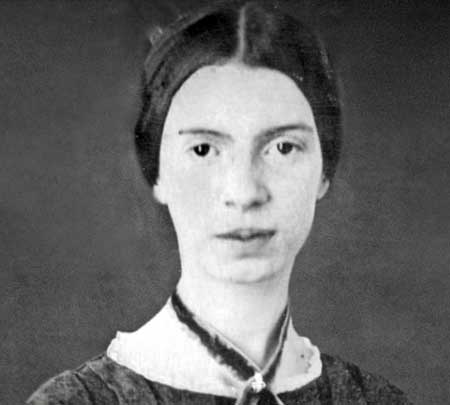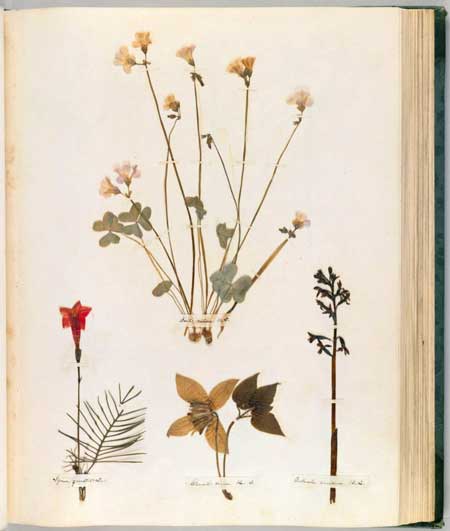Poetry
Guest Commentary
by Alfred Clemente, Ph.D.

It is a great pleasure to have Alfred Clemente’s reflections on Emily Dickinson appear as a guest commentary in Boston Arts Diary. A seasoned professor of literature, he exhibits in his writing, as in his teaching, a vivid and infectious passion for his subject, and a capacity to talk about it with a kind of jazz-like fluidity and immediacy, which this brief piece clearly demonstrates.
– Charles Munitz aka BADMan
Emily Dickinson’s poems have become a strange obsession for me. I can’t wait at a red light without mentally racing through “Much Madness is Divinest Sense–” or “I can wade Grief–” before the light changes. I don’t mean that a stoplight moves me to either grief or insanity. It’s just that so many of her poems have become my quotidian companions. I can’t hold my finger under a running faucet, impatiently waiting for wintry water to warm, without muttering, “The Soul Selects her own Society–” or “Tell all the Truth / but tell it slant–” the latter often in Giuseppe Ierolli’s Italian translation, “Di tutta la verita ma dilla obliqua.”
I’ve always taught and admired Emily Dickinson’s poems, but they were only one constellation in a sky of dazzling lights—whether Shakespeare’s or Anne Sexton’s, Billy Collins’ or Elizabeth Bishop’s, John Keats’ or Edna St. Vincent Millay’s. So many delights—too numerous to cite! Yet, in the past two years, the mysterious phantom of Amherst has re-entered my life with a resplendence I had not seen coming.
My fixation has even reached my grandchildren. This past year, after hearing me expatiate on the marvels of Dickinson’s verse, sixteen-year-old Mackenzie poked a few keys on her cell phone and ordered a copy of Joyce Carol Oates’s “The Essential Emily Dickinson.” Mackenzie is now a card-carrying Emily fan. Twelve-year-old, bilingual Lana, whose mother is Japanese, has spent afternoons sitting next to me, on our living room couch, translating such poems as “I’m Nobody! Who are you?” into Japanese, while I scour the Web to compare Italian, Spanish, and French translations.
Such joy! But what, I ask, has caused this compulsion in me? Perhaps the same qualities (though not in these exact words) that the girls may have discerned: a distinctive and honest voice; a voice that confronts life’s aches and ambiguities; a voice that echoes the heart as well as the mind; a voice whose wit and wisdom earn your trust; a voice that is unafraid; a voice that never kowtows to convention, whether in form or feeling. These are perhaps overblown words to describe what may be my granddaughters’ more simple appreciations, but they define some of my responses.

Houghton Library, Harvard University
Of course, as a professor, I am also repeatedly charmed and excited by Emily Dickinson’s verbal art, by her complex but accessible aesthetic— her flirtations with paradox, her defiance of expectation, her disarmingly simple eloquence. I am under the spell of her poignant honesty in “This is My Letter to the World / That never wrote to me–”; or the exquisite marriage of form and feeling in “I can wade Grief– / Whole pools of it–”; or her paean to Nature in “Inebriate of Air–am I– / And Debauchee of Dew–“; or her allegorical narratives, such as “Because I could not stop for Death– / He kindly stopped for me–”. She bedazzles. She never disappoints.
I must admit, however, that the poet–as person–is a far larger province to explore than I have attempted thus far in my affectionate scrutiny of her lyrics. Yes, Emily Dickinson as prolifically creative recluse may not be her entire reality. One may, with some trepidation, describe the Emily Dickinson of “Wild Nights” as the poet of frustrated passion, which may give added meaning to many of her poems. Nonetheless, the hundreds of poems she composed grow out of a broader compass of feeling than thwarted love. She was a verbal trickster, a singing psychologist, a philosopher and a poet who, in a mere thirty years, sang the truths of life and death and beauty in an astonishing 1775 poems.
Apart from his great dramas, Shakespeare wrote fewer than 160 poems–154 sonnets plus some longer poems. Keats, whom Dickinson cherished, wrote fewer than 150 poems, (though, in all fairness, he died very young.) Even the most prolific poets seldom write more than 200 poems. Yet Emily Dickinson, who had fewer than a dozen poems published in her entire lifetime, wrote nearly 1800 poems, most of them superb works of art–her mysterious and miraculous clarity, her magic and honesty and insight–enacted and re-enacted again and again.
This is my immodest love letter to Emily Dickinson, 280 Main Street, Amherst, MA.
Alfred Clemente, Ph.D.
March 20, 2019
Alfred Clemente teaches American literature at Fordham University. He writes academic materials, arts criticism, poetry, and fiction. He has recently completed a novel and has begun work on a study of Emily Dickinson’s poetry.
Leave a Reply